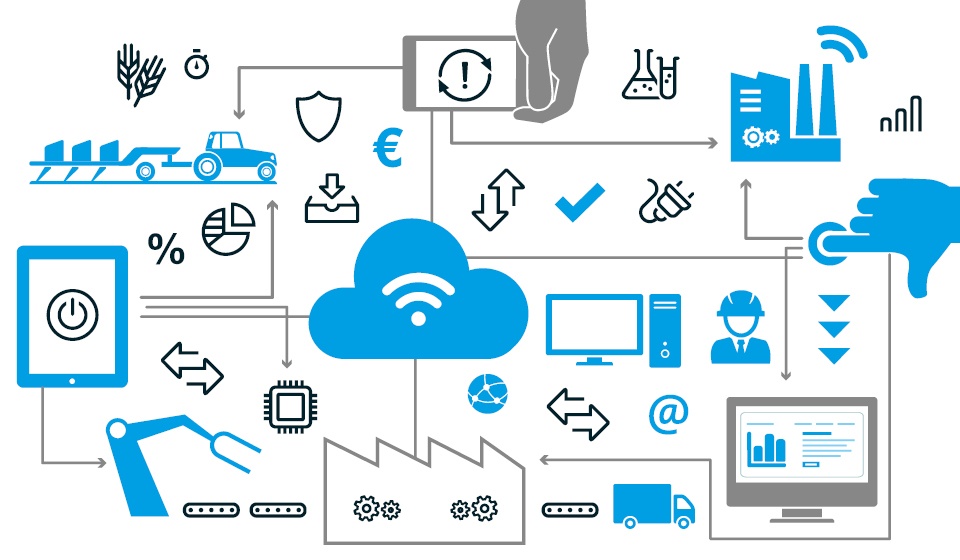Why Jobs-to-Be-Done is Foundational to Digital Marketing

There was a time not too long ago when we did most of our shopping face to face. We drove to the store, browsed around, selected products, asked questions of the sales associates, and made purchases. In B2B scenarios, salespeople often visited the office with brochures, samples, and slick pitches.
In either case, the customer experience was in person or live on the phone. Conversations happened between real people in real time.

Then in 2011, the term Industry 4.0 was coined, largely to describe the efforts to digitize the manufacturing industry. However, those digitization efforts have extended far beyond manufacturing. Over the past decade, nearly every industry and business function has been digitized in some way—including the customer experience and the process the customer goes through to buy a product.
At first, bringing customer experience into the digital realm was about efficiency. Businesses could reduce costs by allowing customers self-service and/or automated options.
Today, customers have become accustomed to self-service and want to complete most of their customer journey on their own. Depending on your source, buyers complete somewhere between 57 percent to 74 percent of the B2B customer journey before they reach out to a salesperson.
The result is that most marketing no longer takes place in person—it’s done mostly at a distance. This means marketers need an entirely new understanding of their customers.
Modern marketing requires a new understanding of the customer
Today, most marketing happens digitally—from display ads to retargeting to website personalization to social media to email marketing. And the more personalized this marketing is to the individual consumer, the more effective it generally is.
According to research by marketing services firm Epsilon, 80 percent of consumers are more likely to do business with a company that offers personalized experiences, and these customers are 10 times more likely to become valuable customers (15+ transactions per year).

However, creating these personalized experiences at scale is no simple feat. In a face-to-face conversation, the sales associate can adjust responses to customer needs in real-time.
When a person walks into a retail store and picks up an item they’re interested in, the sales associate can immediately engage with the customer and assess his or her needs via both verbal and non-verbal cues. The associate can use these cues to actively guide the customer through awareness, evaluation and purchase of the product.
However, in a distant, digital conversation, brands must anticipate what the customer will need before the customer shows up. Because customers are gathering so much information on their own, brands need to make sure that the content that they’re providing is available at the right places at the right points in time to influence that 57% of the journey. If the brand is not part of the evaluation stage, they’re not going to have a chance to win the business.
This requires that marketers create messaging, content, and creative to facilitate the conversation and customer journey—before they happen. They must also be able to predict what digital cues indicate a customer may be open to starting a conversation with the brand and where that customer is in their journey.
That’s a lot of new complexity to address—but the best place to start is with a detailed understanding of customers and their needs.
Understand your customer’s needs and journey with Jobs-to-be-Done
Understanding customer needs has always been important. But in the wake of Industry 4.0 and the advent of digital buying experiences, it’s more important than ever. To execute real-time, digital conversations at scale and across channels, brands must know their customers well enough to predict their needs and behaviors before they happen.
Additionally, brands must not only understand customer needs related to their products and services—they must understand customer needs related to the buying experience. This includes understanding what the customer is trying to get done overall, as well as what they are trying to accomplish as they progress through each stage of the customer journey.
Jobs-to-be-Done offers the perfect methodology for understanding all aspects of the customers’ needs and the process they go through to have those needs met.
What is Jobs-to-be-Done?
Jobs Theory is the notion that people buy products and services to get a “job” done. As Theodore Levitt said, “people do not want a quarter-inch drill, they want a quarter inch hole.” While products and technologies come and go, the customer’s underlying job remains stable over time, offering a stable focus for value creation.
By focusing on the customer’s job—what they are trying to accomplish—it’s possible for brands to gather concrete information on which of their customers’ needs are unmet and which needs are underserved by current solutions in the market. The methodology also provides valuable insight into the process customers go through when they’re trying to evaluate and purchase a product that will help them complete a job.
Jobs-to-be-Done allows the brand to see, at a granular level, exactly where and how the customer is struggling—both with current solutions in the market, as well as with their buying experience.
Marketers can use this insight in a couple of key ways:
- Optimize the touchpoints of their customer journey to better address customer needs
- Map needs-based messaging and content to each stage of the customer journey
With this approach, brands can have a high degree of confidence that the messaging and experiences they create to facilitate the digital customer journey will resonate with their customers—before a customer ever engages with it.
The future is automated
Thanks to the technologies developed out of Industry 4.0, scaling a business is much easier than in the past. Creating experiences can be done at scale via automation.
However, automating a bad process or a negative experience will only get you to a bad result faster. Because the approach provides such detailed information about customers and their needs, Jobs-to-be-Done helps businesses to automate the right processes and personalized experiences for their customers.
While most people know Jobs-to-be-Done for its potential on product innovation, there is also significant opportunity for process innovation that will affect the customer experience. Doing the research to understand the unmet needs customers face throughout their journey will be very valuable to organizations as they try to automate these various processes moving forward.
To hear more from Dr. Tuten, register for her upcoming webinar with Strategyn.























































































Great content!
Cheers!